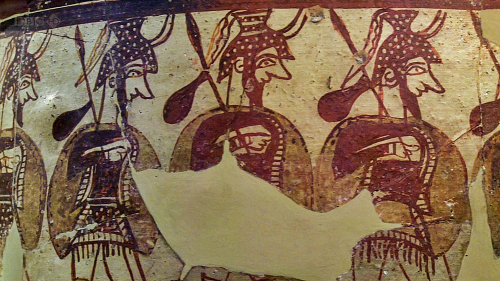#warrior vase
Warrior Vase, Mycenae, Greece. 1200 BCE, Mycenaean.
- referred to as a krater; two handles on the side, was used to store and/or serve wine. more for ceremonial/decorative use.
- depicts a woman (left hand side). raised arm, bidding farewell to the soldiers. only one to show emotion.
- battle very significant with ancient greece.
- soldiers show no emotion, but they’re soldiers. supposed to be stoic marching into battle. features do not differ; same figure repeated. certain anonymity to being a soldier. promotes sense of unity amongst the military, one unitary body
Post link
Ancient Worlds - BBC Two
Episode 1 “Come Together”
KraterfromMycenae,Greece, known as the Warrior Vase.
Late Helladic period (late Bronze Age), 1200-1100 BC.
The painted terracotta vase was found by Heinrich Schliemann on the acropolis of Mycenae. During the 1870s Schliemann excavated the ancient Shaft Graves, a royal cemetery, where he discovered spectacular grave goods.
The large vase depicts a group of heavily armed warriors (helmet, cuirass, greaves, shield and spear) as they depart for war, a sack of supplies hanging from their spears. A woman, standing to one side, bids them farewell. It is one of the best known examples of Mycenaean Pictorial style
Ancient greeks used kraters to mix wine and water.
National Archaeological Museum, Athens, Greece
Post link



